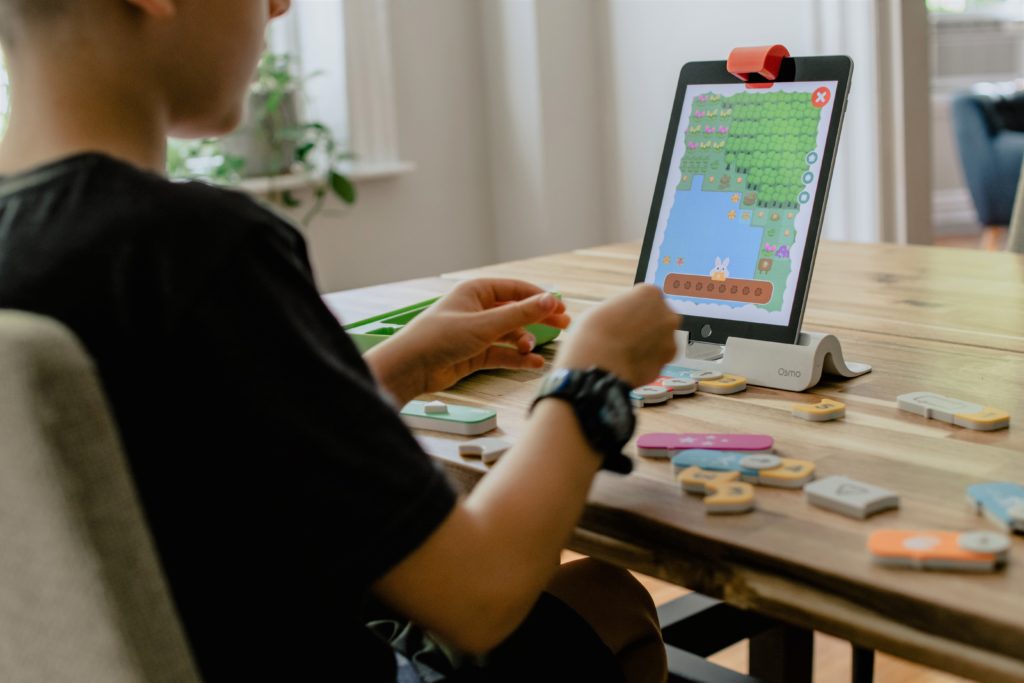Using STEAM to Support Remote Learners

Young person wearing a black short-sleeved t-shirt with a black sports wristwatch. The young person is seated at a wood table indoors and is practicing a shapes learning activity on a computer tablet with physical shapes. In the background there is a window with natural light and a potted plant on the windowsill. Image credit: Kelly Sikkema.
Since remote and hybrid learning are dominant modes of teaching for the foreseeable future, educators and students alike can benefit from STEAM learning strategies to promote engagement and learning across settings. Research suggests that STEAM (the integration of sciences, technology, engineering, the arts and math) education can help address these needs by increasing student engagement and preventing learning loss associated with remote learning.
STEAM education can help develop students’ creative, social and emotional, and critical thinking skills to enable them to effectively process and navigate these unprecedented times. The transdisciplinary focus of STEAM education is also well positioned to reduce redundancy and maximize learning across the disciplines when instructional time is at a premium.
The National Science Teaching Association (NSTA) and the Innovation Collaborative have developed strategies and recommendations for high-quality STEAM learning for all students, which educators can integrate into their remote learning situations.
Pillars of Sensemaking
NSTA recommends four “must haves”, or pillars, for this type of high-quality instruction.

These four sensemaking pillars focus on the following opportunities and learning for all students:
- Nurture a sense of belonging as a valued member of the classroom learning community.
- Use real-world phenomena or problems to drive learning by leveraging the interests, experiences and cultural and community assets students bring to the learning community.
- Authentically engage students in the practices of the five STEAM disciplines.
- Provide opportunities for students to share ideas and revise conceptions as they build understanding of targeted core ideas of STEAM disciplines to explain how or why the phenomena occurred and/or solved problems.
Strategies for Integrating STEAM Into Virtual Settings
These sensemaking pillars dovetail with successful hybrid lesson planning strategies the Innovation Collaborative found in preliminary studies that were completed with support from the National Endowment for the Arts. The following strategic steps are designed for real-world problem solving that engages and empowers students to explore important concepts:
- Decide what content/concept(s) and disciplinary practices/habits of mind you will use.
- Work with a teacher in another discipline to integrate content and practices across disciplines. (To be STEAM, this must include an arts component!)
- Determine the Big Idea for your integrated lesson.
- Start with hands-on activities or problems to solve from your discipline and then integrate hands-on activities from the other discipline that dovetail with your content.
- Assess the lesson and student projects qualitatively using rubrics.
These five strategic steps, coupled with the STEAM sensemaking pillars, can improve remote learning for students through STEAM education. NSTA and the Innovation Collaborative offer examples of lessons, rubrics and professional learning that can be used at home or in classrooms.
While the future is uncertain regarding remote and hybrid learning, we are certain that STEAM education will continue to provide meaningful learning experiences for students. Enjoy seeing students thrive and grow!



